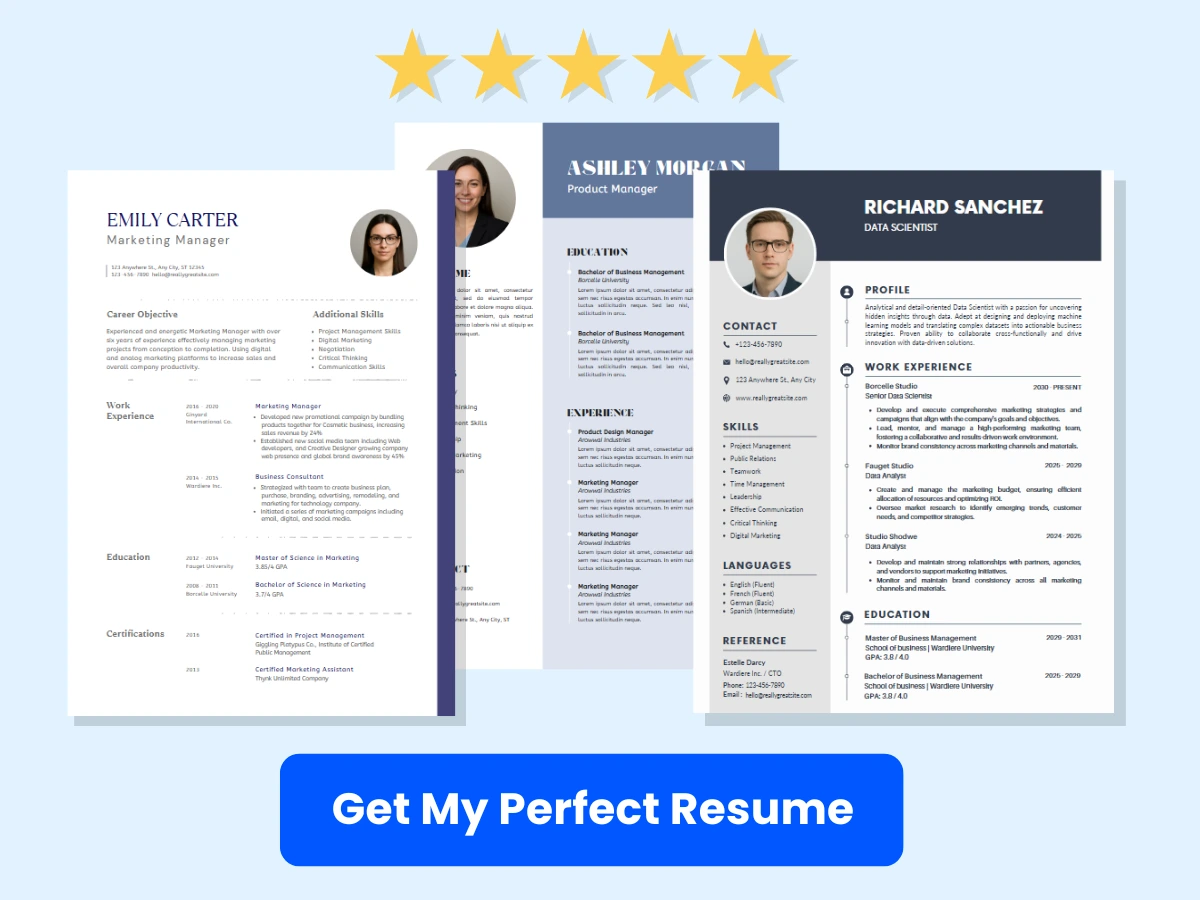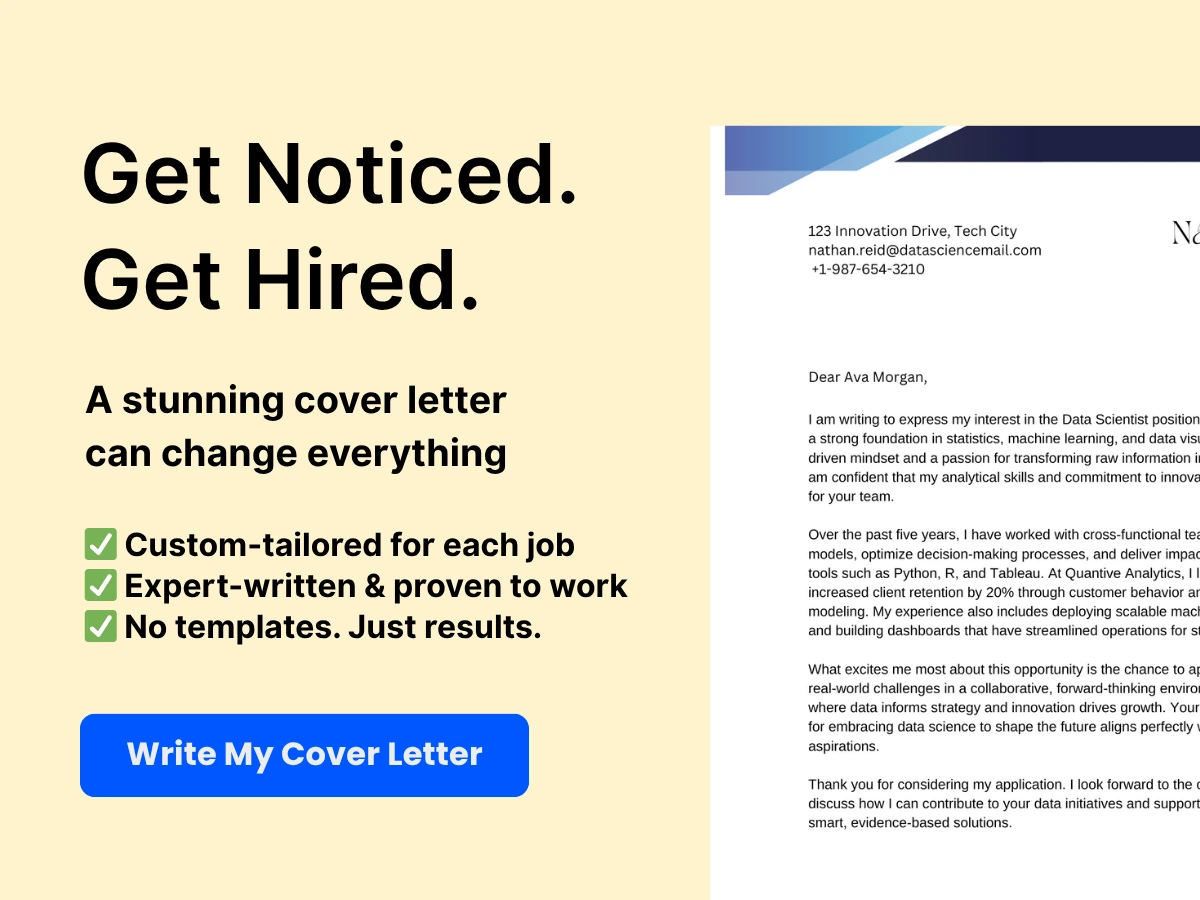First impressions matter—especially in written communication. The opening lines of a letter can shape the tone of the message, influence the reader’s perception, and establish your credibility from the start. Whether you’re corresponding in a business context or sending a formal inquiry, knowing how to open a letter professionally is a valuable skill.
This guide explores how to craft effective letter openings that reflect professionalism and confidence. It includes tips, examples, and best practices to help you make a strong and lasting impression. These techniques are especially useful when used in tandem with strong application materials, such as a customized cover letter that supports your messaging.
A strong opening not only captures attention but also builds rapport and sets the stage for a productive exchange. It communicates respect, purpose, and professionalism—qualities that help you stand out and foster trust with your reader.
Additionally, opening your letter with clarity and confidence can reflect positively on your overall communication strategy. For professionals seeking to strengthen their writing and outreach efforts, investing in career planning and consulting can provide structure and support that goes beyond a single message.
This guide covers:


- Common mistakes to avoid when greeting in a letter
- Tips for crafting a professional and engaging opening
- Examples of effective letter openings for different types of correspondence
Whether you’re reaching out for business, networking, or personal reasons, these strategies will help you greet like a professional and make the right first impression. And if you’re working to align your communication across platforms, optimizing your LinkedIn profile can further reinforce your personal brand.
The Basic Components of a Letter Opening
When it comes to crafting business letters, it’s important to ensure that you have all of the necessary components in place to make a great first impression. The opening section of your letter is no exception, and there are four key elements that you should always include:
The Heading
The heading of your letter is the first thing that your recipient will see, so it’s crucial to get it right. The heading should contain your name or your company’s name and address, as well as the date that the letter was written. This information should be positioned at the top of the page, ideally in the center or on the left-hand side. Make sure that the font is easy to read, and that the text is properly aligned.
The Date
The date is an essential component of your letter opening. It provides your recipient with important information about when the letter was sent, and it also gives your letter a sense of urgency. The date should be positioned directly beneath the heading, and it should be written in a clear and easy-to-read format. Depending on your location, you may need to adjust the date format to reflect local customs.
The Recipient’s Name and Address
Before you start to write the body of your letter, you need to address it to the correct person. This means including the recipient’s name and address in the opening section of the letter. The recipient’s name should be positioned on the line directly below the date, and it should be written in a formal style (e.g. Mr. John Smith). The full address of the recipient should be positioned below the name, and it should be written in a clear and legible format.
The Salutation
Finally, you need to include a salutation in your letter opening. This is a greeting that should be tailored to the recipient, and it can range from formal (e.g. Dear Mr. Smith) to informal (e.g. Hi John). The salutation should be positioned directly beneath the recipient’s address, and it should be followed by a colon or a comma. Make sure that you double-check the spelling of the recipient’s name before you finalize your letter.


The opening section of your letter is an important opportunity to make a great first impression. By including the heading, the date, the recipient’s name and address, and a personalized salutation, you can ensure that your letter gets off to the best possible start.
Common Greeting Styles
When it comes to writing professional letters, greeting the recipient appropriately is crucial. The opening sets the tone for the rest of the letter and can impact how the reader perceives the message. Below are some common greeting styles to use depending on the situation.
Formal and semi-formal greetings
Formal greetings are typically used for business-related letters or any other communication that requires a high level of professionalism. These greetings tend to use full titles and last names to address the recipient. Here are a few examples of formal greetings:
- Dear Mr. Smith,
- Dear Dr. Johnson,
Semi-formal greetings, on the other hand, are slightly less formal than a formal greeting, but still maintain a professional tone. They may use first names with an honorific or full name without an honorific. Here are a few examples of semi-formal greetings:
- Dear Professor Garcia,
- Dear Reverend Lee,
Informal greetings
Informal greetings are typically used in personal correspondence or with individuals that you have a friendly relationship with. These greetings tend to be more casual and may include the use of first names or even nicknames. Here are a few examples of informal greetings:


- Hey John,
- Hi Sarah,
Greetings for specific situations
Depending on the context of the letter, there may be specific greeting styles that are appropriate. Here are a few examples of how to greet someone in specific situations:
- Job applications: Use a formal greeting with the recipient’s full name, such as Dear Hiring Manager Smith,
- Business proposals: Use a formal or semi-formal greeting with the recipient’s full name, such as Dear Dr. Johnson, or Dear Ms. Davis,
- Thank you notes: Use an informal greeting with the recipient’s first name, such as Hi John,
It’s important to keep in mind that the greeting sets the tone for the entire letter, so choose a greeting that is appropriate for the context and relationship with the recipient. Using the right greeting can help ensure a positive and professional correspondence.
Avoiding Common Greeting Mistakes
When it comes to greeting someone in a professional setting, there are a few common mistakes that people make. Here are some common pitfalls to avoid:
Using incorrect titles or names
It is important to ensure that you are addressing the recipient of your letter correctly. Always double-check the spelling of their name and their professional title. If you are unsure of their title, it is better to ask for clarification than to make assumptions.
Overusing certain phrases like “To Whom It May Concern”
While it may seem like a safe option, overusing certain generic phrases like “To Whom It May Concern” can come across as impersonal and lazy. Instead, try to find out the name of the person you are addressing your letter to.
Misusing informal greetings
When writing to someone in a professional capacity, it is important to use a formal greeting. Avoid using familiar or overly casual phrases like “Hey there” or “What’s up?”.
Other pitfalls to avoid
In addition to the above, there are other common mistakes people make when greeting someone in a professional setting. For example:


- Using overly flowery language
- Launching straight into the body of the letter without a greeting
- Using an inappropriate tone for the situation
By being mindful of these common pitfalls, you can ensure that your letter opening is professional and effective. Remember, the greeting is the first impression you make on the recipient, so it is important to get it right.
Examples of Formal Greetings
When it comes to professional communication, the way you greet your recipient is of utmost importance. A formal greeting sets the tone for the entire message and can help establish your credibility and professionalism. Here are three examples of formal greetings that you can use in different scenarios:
Addressing Government Officials
When writing to government officials, it’s important to be respectful and formal. Use proper titles and avoid using any contractions or slang.
Dear [Title and Last Name],
I am writing to you regarding [purpose of the letter]. As a [position], I am sincerely concerned about [issue] and believe that [proposed solution]. I would appreciate the opportunity to discuss this matter further with you.
Thank you for your time and attention to this matter.


Sincerely, [Your Full Name]
Writing to High-Ranking Executives
When communicating with high-ranking executives, it’s essential to demonstrate your professionalism and respect. You should address them using their proper titles, and avoid using a first-name basis unless invited to do so.
Dear [Title and Last Name],
I am writing to you regarding [specific topic or issue]. As a [position or title], I am excited to share with you [purpose of message].
I would be honored to have the opportunity to [action request, meeting, or phone call] at your earliest convenience.
Thank you for your valuable time and consideration.


Respectfully, [Your Full Name]
Addressing Someone You’ve Never Met Before
If you are addressing someone you have never met before, it’s important to start with a formal greeting to establish your professionalism and respect. It’s a good idea to use their proper title, and use “Dear” followed by their full name.
Dear [Title and Last Name],
I am writing to you regarding [specific reason for writing]. As an expert in [related field], I believe that [purpose of message].
If you have any questions, please don’t hesitate to contact me at [contact information].


Thank you for your time and consideration.
Examples of Semi-Formal Greetings
When it comes to professional correspondence, it’s important to choose the right greeting based on the context of the message. Here are some examples of semi-formal greetings for different situations:
Writing to a Colleague or Business Associate
Dear [Name],
Hello [Name],
Hi [Name],
Addressing Someone You’ve Met Before But Don’t Know Well
Dear [Title] [Last Name],
Dear [First Name] [Last Name],
Hello [Title] [Last Name],
Hi [First Name],
Greetings for Job Applications
Dear Hiring Manager,
Dear [Company Name] HR Team,
To Whom It May Concern,
When applying for a job, it’s always best to research who will be receiving your application and address them by name if possible. However, if you’re unsure who the right person is, a general greeting like “To Whom It May Concern” will still be appropriate.
Remember, while it’s important to be professional in your greetings, you also want to make sure you’re being friendly and approachable. A well-crafted greeting can help set the tone for the rest of your message, so take the time to choose the right one for every situation.
Examples of Informal Greetings
When it comes to informal letters, it’s important to keep the greeting friendly and personable. Here are some examples of informal greetings that you can use when writing to a friend or family member, or when addressing someone you have a casual relationship with.
Greetings for Personal Letters
- Hi there,
- Hey,
- Hello,
- Dear ___________ (insert name),
Writing to a Friend or Family Member
- Howdy,
- What’s up,
- How have you been,
- Long time no see,
- It’s been a while,
Addressing Someone You Have a Casual Relationship With
- Hi,
- Hello,
- Hey,
- Good to see you,
- What’s new,
Remember, an informal letter should be relaxed and conversational. Don’t be afraid to use contractions, slang, and a more informal tone to make your writing sound natural and personable. Greet your recipient like a professional with these informal greeting examples.
Using the Right Tone in Your Greetings
The way you greet someone sets the tone for the entire letter, email, or message. It’s important to adjust your tone for different recipients based on your relationship, purpose, and the message you want to convey. Here are some tips on using the right tone in your greetings:
Adjusting your tone for different recipients
- Formal vs. informal: Determine the level of formality that’s appropriate for the occasion and recipient. A formal tone is more suitable for business, academic, or official correspondence, while a casual tone works better for personal, friendly, or casual communication. Avoid being too stiff or too familiar.
- First-time vs. recurring: If you’re introducing yourself for the first time, you want to make a good impression and establish your credibility. Use a polite and respectful tone to show your professionalism and interest. If you’re addressing someone you’ve met before, you can use a more relaxed and friendly tone to build rapport and connection.
- Superior vs. subordinate: If you’re writing to someone who outranks you or has more authority, show a level of deference and respect. Use formal titles, such as “Sir,” “Madam,” or “Dr.,” and avoid being too informal or familiar. If you’re writing to someone who works for you or reports to you, be mindful of your tone and avoid being condescending or rude.
Appropriate use of humor and casual language
Humor and casual language can add personality and warmth to your greetings, but they also carry risks of misinterpretation and offense. Here are some guidelines for using humor and casual language:
- Know your audience: Understand the recipient’s cultural background, sense of humor, and level of familiarity with you. What may seem funny or friendly to you may be inappropriate or offensive to them. Avoid using jokes or slang that may be misunderstood or irrelevant.
- Keep it light: Use humor and casual language sparingly and appropriately. Don’t overwhelm or distract from the main purpose of your message. Avoid using humor or casual language in serious or sensitive topics, such as apologies, reprimands, or condolences.
- Be authentic: Don’t force yourself to use humor or casual language if it’s not your natural style. You don’t have to be funny or witty to be likable or professional. Focus on being clear, concise, and respectful.
Conveying the right level of respect and professionalism
Your greeting should convey the level of respect and professionalism that’s expected or required based on the context and relationship. Here are some tips on conveying the right level of respect and professionalism:
- Use appropriate titles and salutations: Use the recipient’s correct title, such as “Ms.,” “Mr.,” “Dr.,” or “Prof.,” if applicable.
Sample Letter Openings
Whether you’re writing a formal business letter, a cover letter for a job application, or an informal letter to a friend, the opening sets the tone for the entire message. Here are some examples of professional greetings to help you start your letter on the right foot.
Formal Business Letter
Dear Mr./Ms. Last Name,
If you’re writing a formal business letter to a recipient you don’t know personally, use their last name and a formal title such as Mr. or Ms. If you know the recipient’s gender-neutral pronouns, use those instead. For example, “Dear Alex Johnson,” or “Dear Mx. Last Name.”
Cover Letter for a Job Application
Dear Hiring Manager,
In a cover letter for a job application, you want to address the person who will be reading your application. If the job posting doesn’t provide a specific name, “Dear Hiring Manager” is a safe bet. If you do have a name, use the same format as you would for a formal business letter.
Informal Letter to a Friend
Hey there!
When writing an informal letter to a friend, feel free to start with a more casual greeting. “Hey” or “Hi” are appropriate openings. You can also use a nickname or an inside joke if you have a close relationship with the recipient. The tone of the letter should be friendly, so let your personality shine through.
No matter who you’re writing to or what the purpose of your letter is, starting off with a professional and appropriate greeting is key to establishing a positive tone for your message.
Tips for Writing a Memorable Greeting
When it comes to crafting a memorable greeting in a letter, it’s important to add personal touches that make the recipient feel special. One way to accomplish this is by including specific details or anecdotes that show you know the person well.
Another effective technique is to use storytelling to engage the reader and capture their attention. By sharing a brief story or anecdote related to the content of your letter, you can create an emotional connection with the reader and make your message more memorable.
Ultimately, the goal of any letter opening is to make a good first impression. This can often be achieved by using a combination of personal touches and creative writing techniques. So take your time and create a greeting that truly reflects your professionalism and personality.
Related Articles
- 5 Signs Your Resume Needs an Update
- The Role and Responsibilities of Senior Managers
- Maintenance Engineer: Job Description, Salary, and Skills
- Zoo Keeping Resumes: Writing Tips and Examples
- Physical Therapy Resume: Example and Writing Tips








